
Cultural Experiences to Enjoy on a Morocco Sahara Road Trip
A road trip across the Moroccan Sahara is more than a scenic ride through sun-scorched dunes and rocky valleys. It is a journey into the heart of Morocco cultures a diverse, living heritage woven from centuries of nomadic life, caravan trade, music, craft, hospitality, and spiritual tradition. Along the Morocco Western Sahara road, the landscapes tell a story, but it’s the people, rituals, and everyday life that truly capture the spirit of the desert.
In this in-depth travel guide, we’ll take you through the most rewarding cultural experiences you can enjoy during your Sahara adventure experiences that will connect you with the deeper identity of Morocco, beyond its monuments and markets.
1. Taste the Ritual of Moroccan Mint Tea with Nomads
No experience reflects Morocco cultures more than the ritual of mint tea — a simple act that carries profound meaning. In desert regions like Zagora, M’Hamid, and the edge of Erg Chegaga, you’ll often be welcomed with a pot of steaming green tea infused with fresh mint and sugar.
The preparation is precise and almost poetic:
-
The tea is poured from a height to create foam (called risha), a sign of hospitality.
-
It’s always served in three rounds, each with different strength and sweetness.
-
Conversations flow slowly, and time stretches out — this is not a rushed moment, but a shared space of trust.
This tea ritual is a pillar of Amazigh and nomadic identity, and it reflects the core values of Moroccan cultures: generosity, patience, and community.
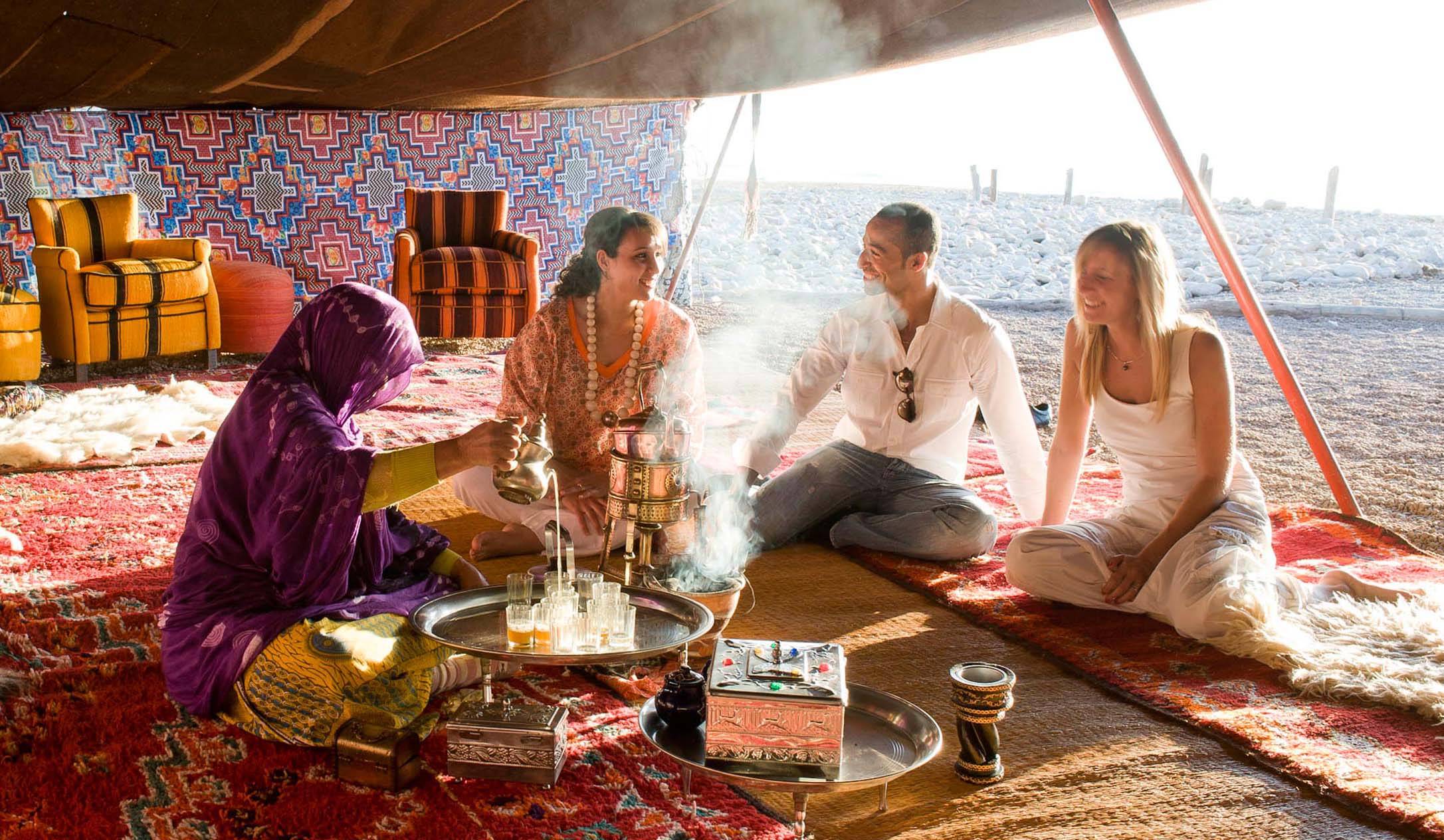
2. Sleep in a Desert Camp and Learn from Local Hosts
Spending a night in a Sahara desert camp is more than just a tourist highlight — it’s a chance to live inside Moroccan desert culture. Many camps, especially those offered by Morocco Travel Road, are owned and run by local families who have preserved ancestral desert knowledge.
While in camp, you’ll:
-
Sit around a fire and listen to traditional Saharan music
-
Hear folk tales and personal stories from your Berber or Sahrawi host
-
Enjoy traditional meals cooked over coals: tagine, medfouna, harira
-
Sleep in camel-hair tents or eco-lodges modeled after Amazigh design
These experiences are windows into Morocco cultures that are not found in museums — but lived, felt, and shared under the stars.
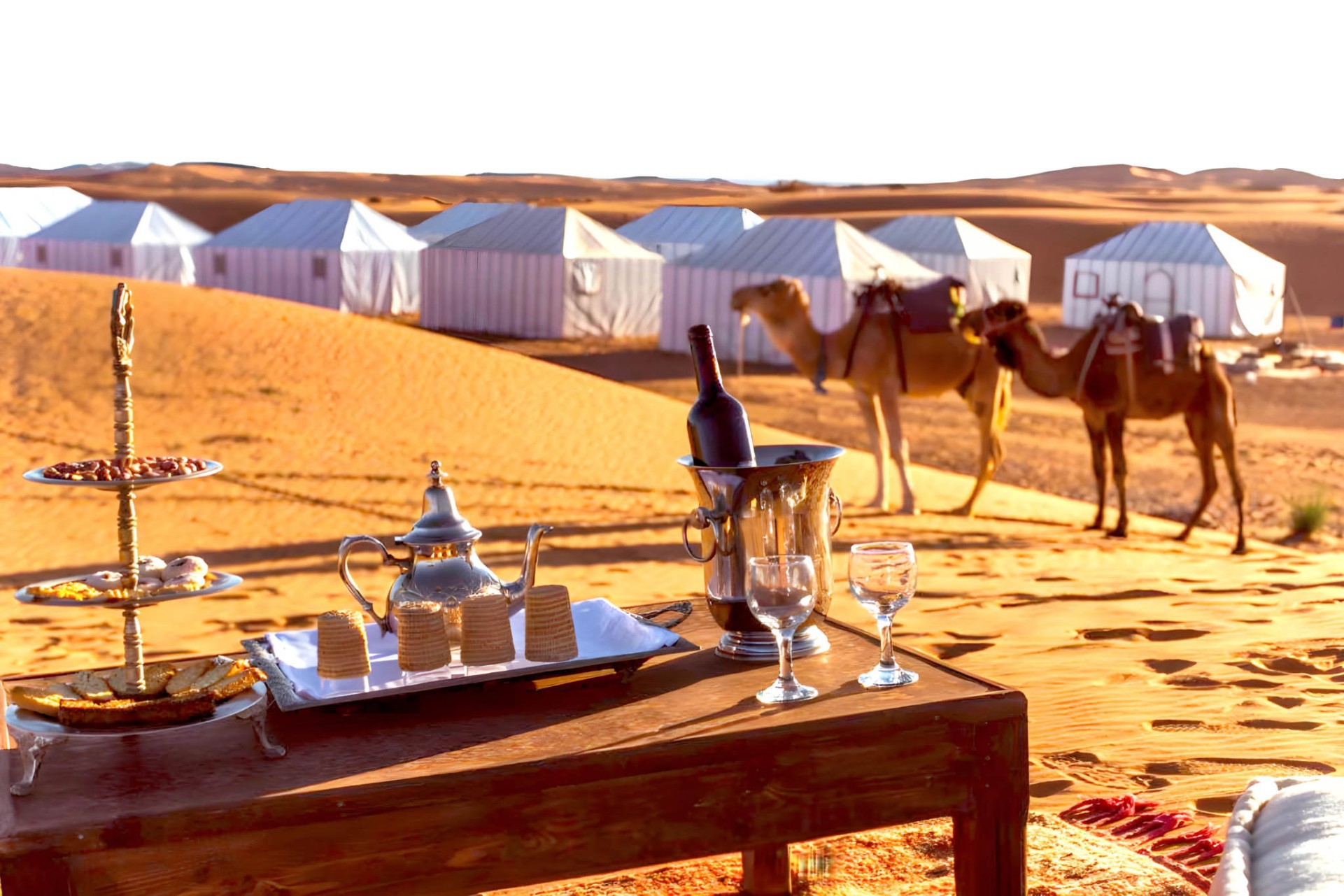
3. Witness the Power of Music: Gnawa and Sahrawi Traditions
The desert has its own sound — one that echoes the history of migration, resistance, spirituality, and joy.
-
Gnawa music, rooted in African spiritual traditions, uses instruments like the guembri (a three-stringed bass lute) and qraqeb (metal castanets) to produce hypnotic rhythms. Originally a form of healing and worship, it’s now celebrated globally for its soulful energy.
-
In the Western Sahara, especially around Laayoune and Dakhla, you’ll hear Hassani music — desert blues played with the tidinit and poetic chants that express exile, love, and freedom.
Live performances, often around a campfire or during festivals, invite travelers to dance, clap, and immerse themselves in these ancient traditions — all crucial layers of Morocco cultures.
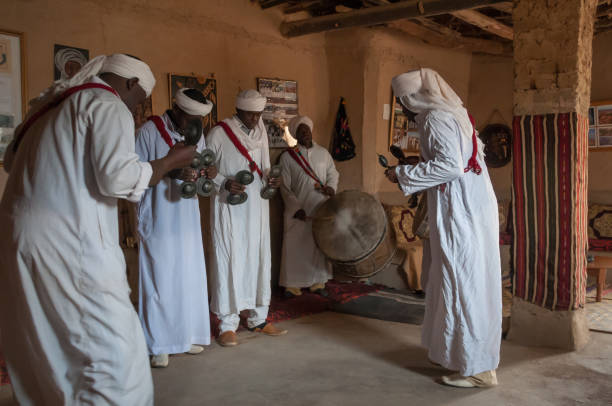
4. Explore Desert Architecture: Ksars, Kasbahs, and Adobe Homes
Driving along the Morocco Sahara road, you’ll notice structures rising from the earth — almost as if they were part of it. These are ksars (fortified villages) and kasbahs (mud-brick castles), masterpieces of sustainable desert architecture.
Famous examples include:
-
Aït Benhaddou, a UNESCO site made entirely of red earth and straw
-
Tamnougalt, once a trading post for caravans
-
Kasbah Amridil, beautifully preserved in the oasis of Skoura
Inside these walls, generations of families lived communally, protected from wind and heat. Decorative elements like geometric carvings, palm wood ceilings, and colorful mosaics reflect Islamic, Amazigh, and Sahrawi aesthetics — all integral to the mosaic of Morocco cultures.
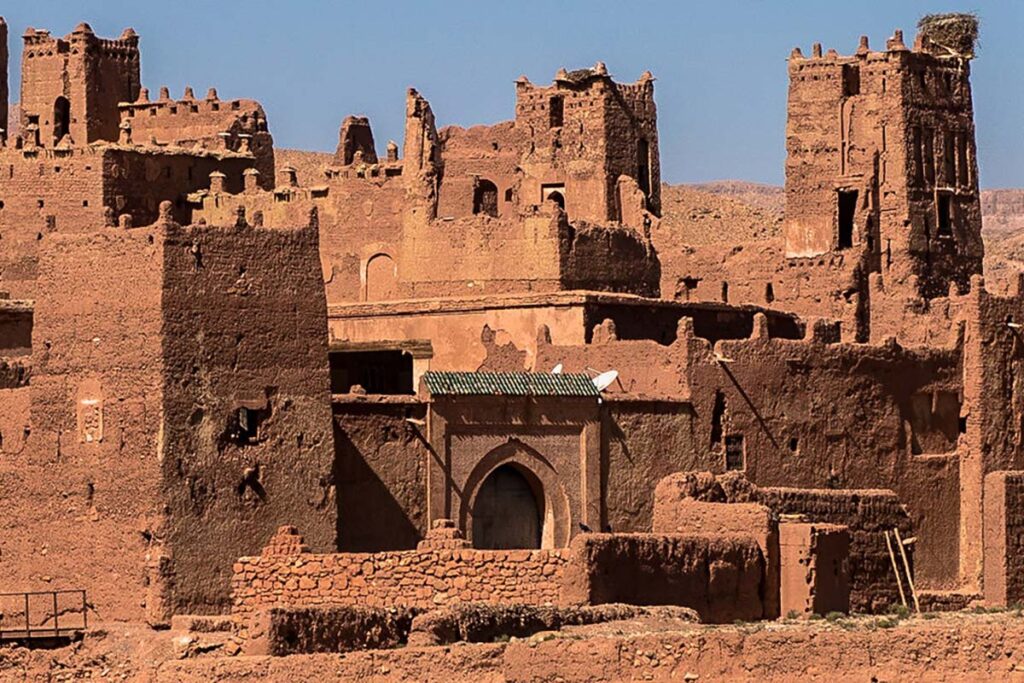
5. Discover the Artisan Traditions of the Sahara
Moroccan craftsmanship is world-renowned, and in the Sahara, artisans continue to create beautiful objects using traditional methods passed down through centuries.
In towns like:
-
Tamegroute, artisans create their iconic green pottery using a centuries-old secret glaze formula.
-
Zagora, women weave kilim rugs using wool dyed with henna, pomegranate, and indigo.
-
M’Hamid, metalworkers shape teapots, trays, and lanterns by hand.
Buying directly from artisans supports their families and helps preserve Morocco cultures in the face of modernization. Workshops often welcome visitors — a rare chance to not just shop, but to understand the heart behind the handiwork.
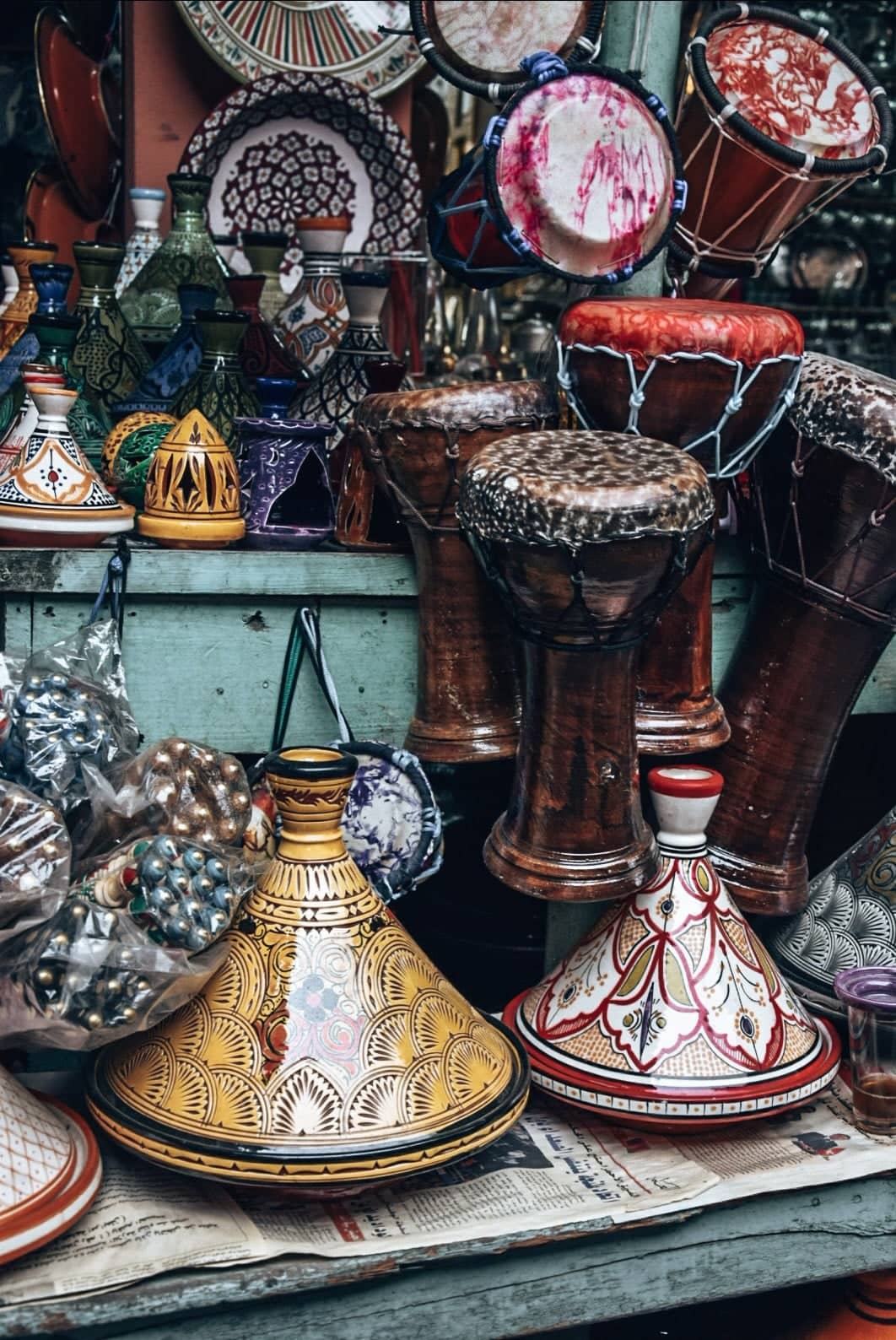
6. Celebrate Festivals and Ceremonies of the Desert
If you time your trip right, you can witness desert festivals that showcase the best of local music, food, and communal joy.
Some key events include:
-
Festival Taragalte (near M’Hamid): A cultural revival of the trans-Saharan caravan spirit, with performances from Africa and the Middle East.
-
International Nomads Festival (Zagora or M’Hamid): With poetry, music, craft displays, and debates on nomadic identity.
-
Dakhla Festival: A modern blend of Sahrawi heritage and Atlantic vibes, with surfing, dance, and storytelling.
These festivals are more than events they’re living expressions of Morocco cultures, drawing people together across tribes and borders.
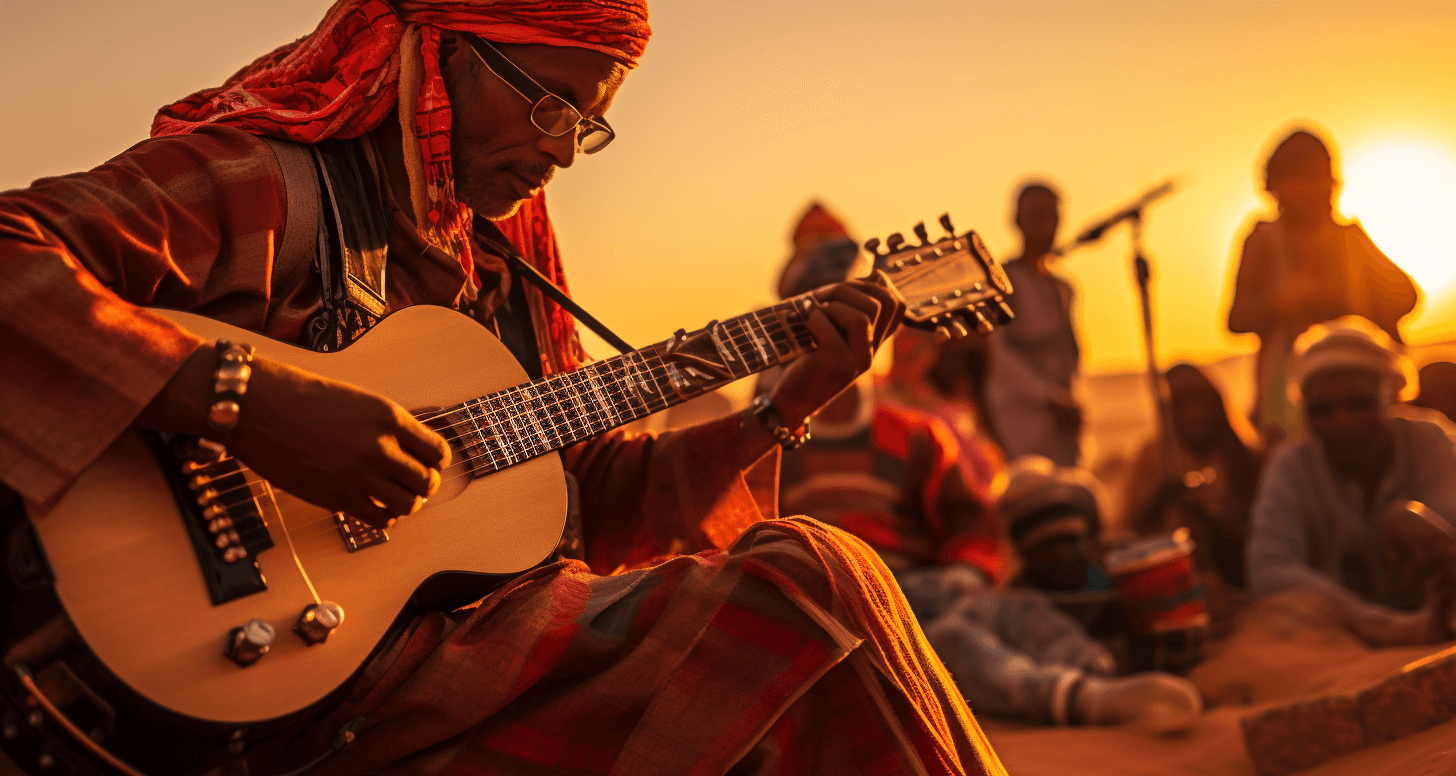
7. Understand the Layers of Spiritual Life
The desert is not just a place of survival, but of spiritual reflection. Islam plays a central role, but it is often practiced in deeply personal, local ways.
-
Zaouias (spiritual lodges) in towns like Tamegroute host Sufi brotherhoods who preserve mystical traditions through chants, meditation, and charity.
-
Many desert communities maintain folk beliefs, blending Islamic prayer with rituals for rain, health, and protection from jinn (spirits).
-
The rhythm of daily life — from the call to prayer echoing across sand to the sight of prayer rugs rolled out beside dunes — connects travelers with a quieter, more reflective side of Moroccan culture.
Spirituality in the Sahara is humble, inclusive, and deeply tied to nature — key elements of the broader Morocco cultures.
8. Dress Like a Local: The Language of Clothing
In the desert, clothing is not only functional but symbolic. Each region and group expresses identity through fabric, color, and accessories.
You’ll see:
-
Amazigh men wearing blue or indigo turbans to protect against sun and sand
-
Sahrawi women in flowing melhfas, often brightly patterned and elegantly wrapped
-
Locals in djellabas (long hooded robes), adapted for cold desert nights
-
Embroidered slippers (babouches), silver jewelry, and leather belts
These traditional clothes reflect environmental adaptation and cultural pride — and travelers are often encouraged to try them on during guided tours or festivals.
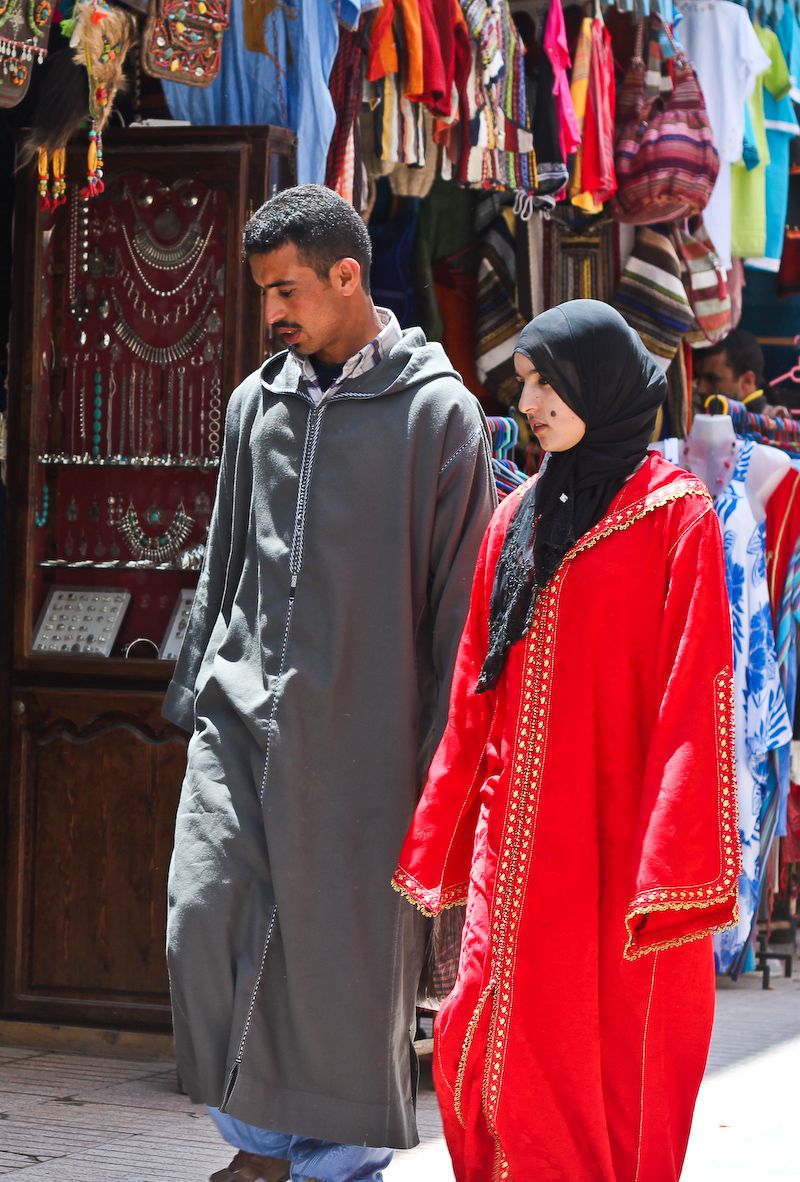
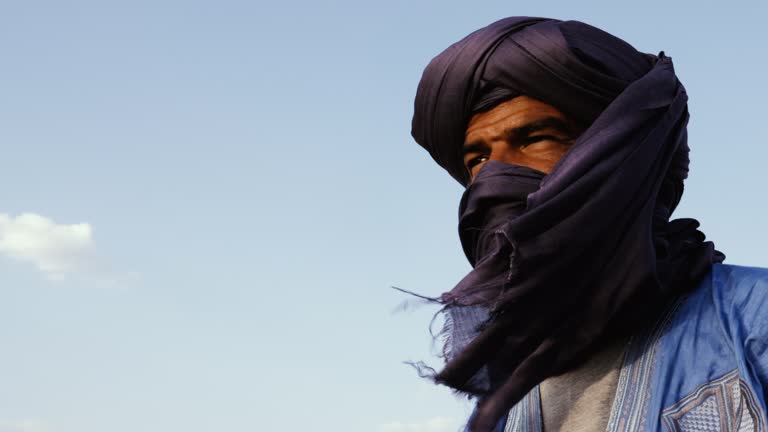
9. Share a Meal, Share a Memory
Food in the Sahara is a sensory journey into Morocco cultures. Meals are shared, often eaten by hand from communal dishes, symbolizing trust and unity.
Highlights include:
-
Mechoui: Whole lamb slow-roasted underground during special events
-
Medfouna: “Desert pizza” filled with meat, herbs, and spices
-
Date and almond pastries, often served during tea or celebrations
-
Meals made with local ingredients like argan oil, saffron, and preserved lemons
In desert guesthouses, meals are often prepared by families, and sitting down together becomes a moment of cross-cultural connection — sometimes more powerful than any tour.
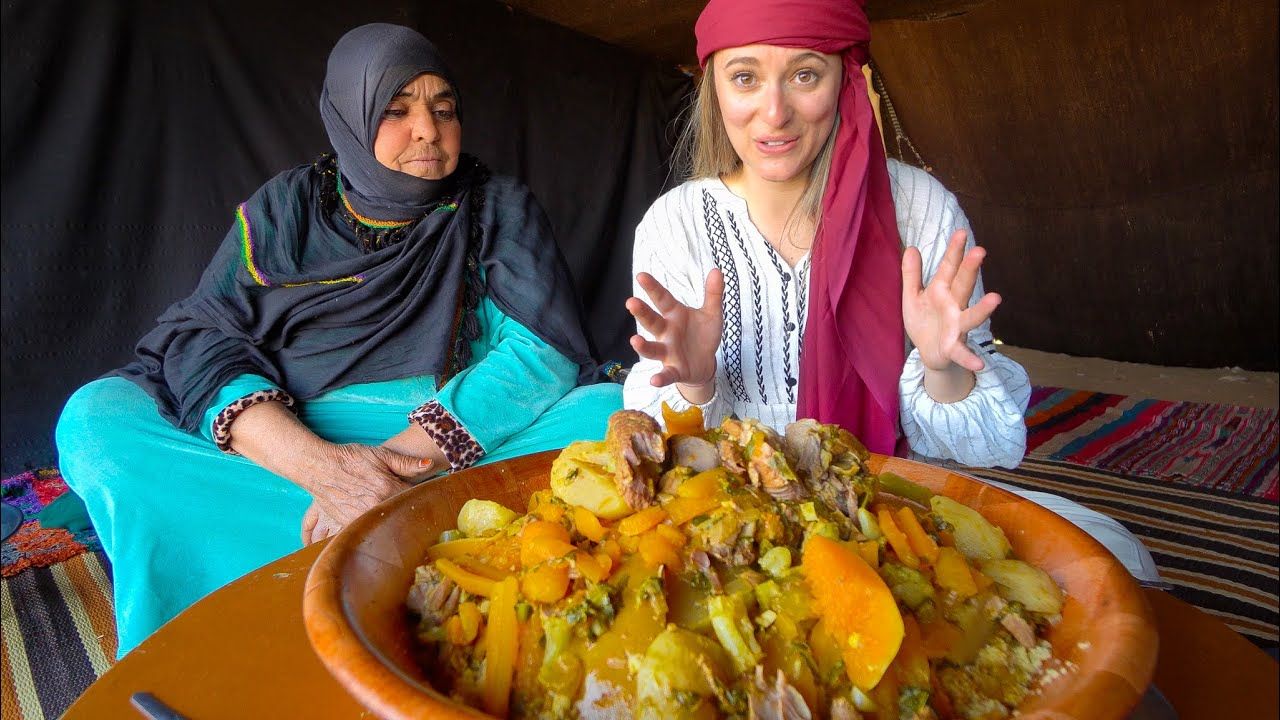
10. Listen to the Stories of the Elders
In many desert communities, the oral tradition is alive and well. Elders are the keepers of memory, passing on history, ethics, and humor through stories.
By sitting with a village elder or desert guide, you may hear:
-
Tales of caravan life across the Morocco Western Sahara road
-
Family histories tied to resistance or migration
-
Lessons in survival, hospitality, and faith
-
Poems in Tamazight or Hassani dialects, rich with metaphor and emotion
This human connection — hearing the past spoken with love and pride — is a rare gift and a key part of experiencing Morocco cultures in their truest form.
11. Photograph the People and Places with Respect
Photography is a powerful way to capture your journey, but it should be done with cultural sensitivity. In many rural or nomadic communities, people may feel uncomfortable being photographed without permission.
Tips:
-
Always ask before photographing people, especially women and children
-
Don’t treat locals as tourist props — engage, smile, offer to share the photo
-
Focus on the environment too: mud-brick homes, dates hanging in palms, a tea pot steaming on the fire — these details tell the real story of Morocco cultures
With respect and curiosity, your photos can become meaningful memories and even start conversations across worlds.
The Moroccan Sahara is more than a place — it’s a way of life. From music and food to spiritual practices and social customs, the desert reveals the beauty, resilience, and richness of Morocco cultures in their purest form.
So when you journey across this ancient land, don’t just look at the dunes — listen to the music, sip the tea, wear the scarf, and hear the stories. That’s where the real magic of the Sahara lives.
If you’re ready to explore the authentic heart of Morocco cultures, the Morocco Western Sahara road is your gateway. With Morocco Travel Road, every journey is more than just a tour — it’s a cultural immersion.
From camel treks and artisan visits to desert music nights and family-run camps, our local guides bring you into the soul of the Sahara with care and authenticity.
Whether you’re planning a 2-day getaway or a 10-day deep dive into desert life, we’ll help you uncover the untold stories and human warmth that define this magical part of Morocco.
Book your Sahara cultural adventure today with Morocco Travel Road — and travel with purpose, depth, and joy.
